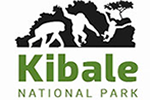Kibale national park is known as the best destination for chimpanzee touring, located in the western part of Uganda. The park protects over 1500 chimpanzees and other 12 primate species and these can be seen during different experiences like; nature walks and treks. For those wishing to spend a good time with the chimpanzees in the wild, Kibale forest national park has got you sorted with the incredible chimpanzee tracking where one spends an hour with the apes.
Chimpanzee trekking in Kibale National Park is a thrilling experience, and Uganda’s efforts to maintain visitor safety and environmental sustainability make it relatively safe. The Uganda Wildlife Authority (UWA) and park management have put in place several measures to ensure that both the visitors and the chimpanzees are protected. Below are the safety aspects put in place to ensure the safety of both trekkers and chimpanzees;
Expert Guides and Rangers
As you are leaving for chimpanzee trekking experience, you are always accompanied by expert guides and armed rangers who know the park, the habits of the chimpanzees, and the safety protocols. These rangers and guides are trained in wildlife management, first aid, and safety. Also, they monitor the chimpanzee families regularly, which allows them to understand the chimpanzees’ behavioral patterns, making interactions more predictable and safer.
Briefing and Safety Protocols
Before setting out, trekkers receive a detailed safety briefing, covering what to expect and how to behave around chimpanzees. This includes guidelines on maintaining a safe distance (7–10 meters) to avoid stressing the chimpanzees. Guides emphasize the importance of not making direct eye contact, not running, and avoiding sudden movements if a chimpanzee approaches, as these actions could be misinterpreted as a threat.
Health and Hygiene Precautions
Chimpanzees share about 98.7% of their DNA with humans, making them vulnerable to human diseases. To protect both parties, trekkers with contagious illnesses (like colds or the flu) are not allowed to participate. Visitors are advised to wear masks in proximity to the chimpanzees to reduce the risk of transmission of respiratory diseases. Hygiene measures like using hand sanitizers before entering the park are sometimes implemented, particularly during periods of disease outbreak.
Group Size Limitations
To prevent crowding and excessive human presence, only small groups (usually 6–8 people) are allowed per trekking session. This controlled group size helps ensure a quieter, less intimidating experience for the chimpanzees. These smaller groups also make it easier for guides and rangers to maintain order and enforce safety rules.
Distance Requirements
During the experience, visitors must maintain a 7- to 10-meter distance from the chimpanzees, although sometimes chimpanzees may come closer out of curiosity. Guides are trained to manage situations when chimpanzees approach, directing visitors on how to respond safely. Keeping distance helps avoid potential aggression and reduces the likelihood of disease transmission.
Physical fitness requirements
Kibale national park’s terrain can be hilly, slippery, and dense with vegetation, which may pose a challenge for some trekkers. While it’s not overly strenuous, the trek requires a moderate level of physical fitness to navigate the forest trails safely. Remember to pack sturdy boots, long-sleeved clothing, and insect repellent to protect against thorny plants, insects, and uneven terrain.
Wildlife Risks
Although encounters with other wildlife (like elephants or buffaloes) are rare during chimpanzee treks, rangers are prepared to manage such situations if they arise. Rangers carry equipment, including firearms, and have strategies for handling unexpected animal encounters safely. Also, trekkers are briefed on how to react in case of such encounters, including keeping calm, following guides’ instructions, and not attempting to run.
Emergency Preparedness
In case of any emergency, Kibale national park’s rangers and guides are trained in first aid, and there are basic first aid kits available. However, Kibale’s remote location means that medical facilities are limited, so visitors with specific medical conditions should be cautious and possibly consult their doctor before participating.
Best time to go for Chimpanzee Trekking in Kibale
The best time for chimpanzee trekking in Kibale is during the dry months of December to February and June to August. Chimpanzees can easily be seen during the dry season since the trails are always dry and accessible. However, you can still trek during the wet months of March to May and October to November.
Cost of Chimpanzee Trekking Permits in Kibale
The current costs of the trekking permits in Kibale as per the Uganda Wildlife Authority are as follows. Foreign residents US$250 per person, Foreign non-residents, US$300 per person and East African citizens 250, 0000 UGX per person
While chimpanzee trekking in Kibale is generally safe, it’s essential for visitors to follow all provided guidelines and listen closely to their guides and rangers for a great enjoyment of the trip.
